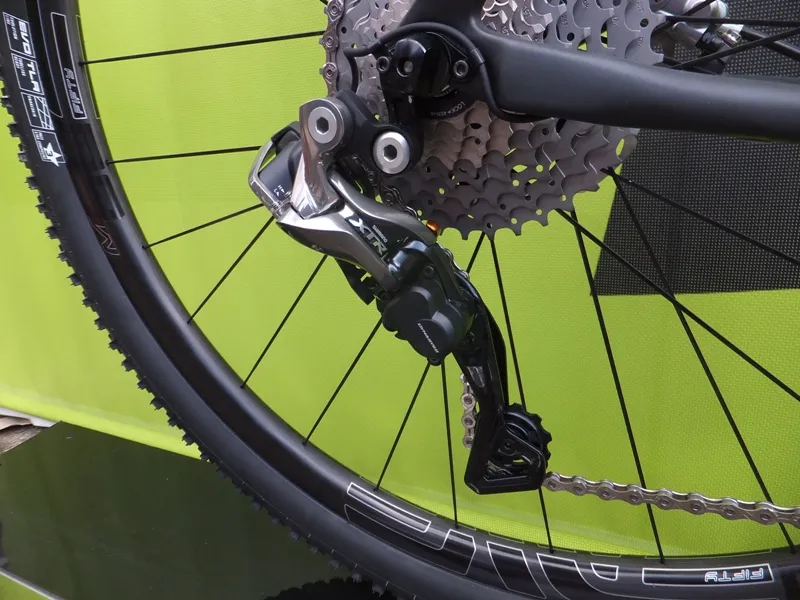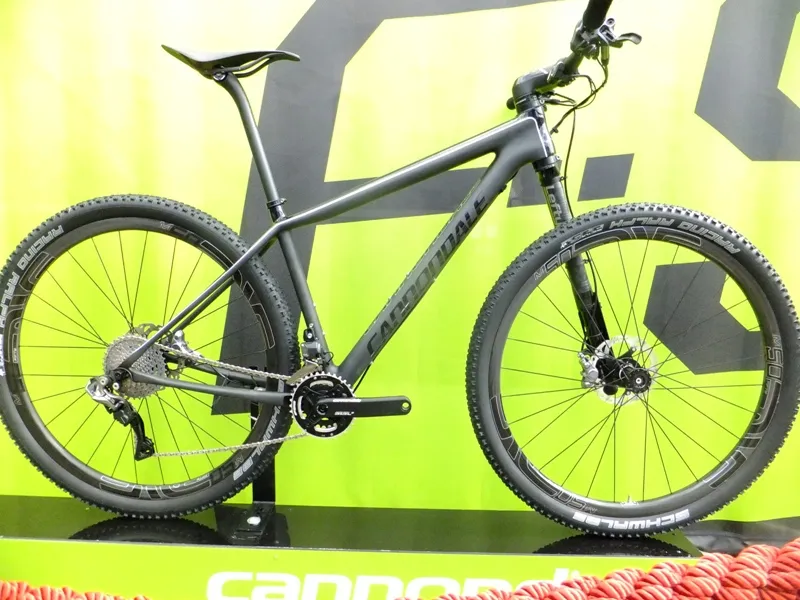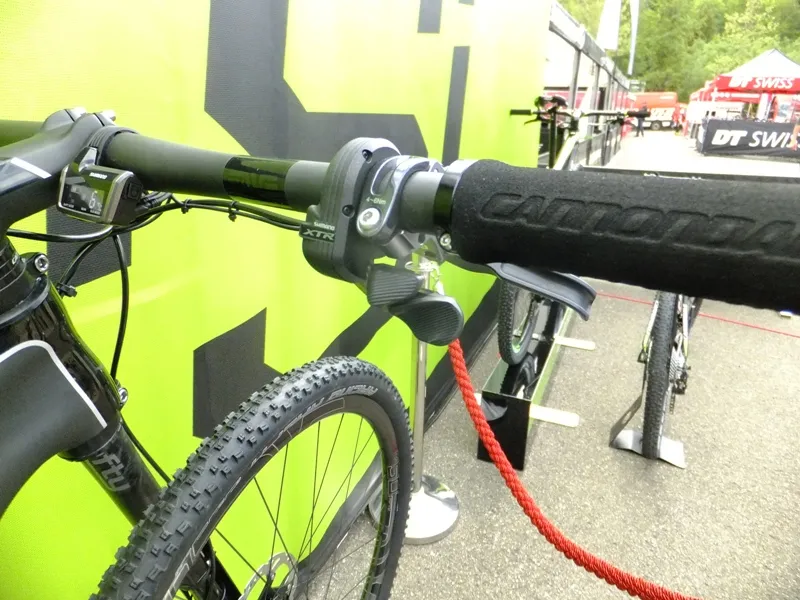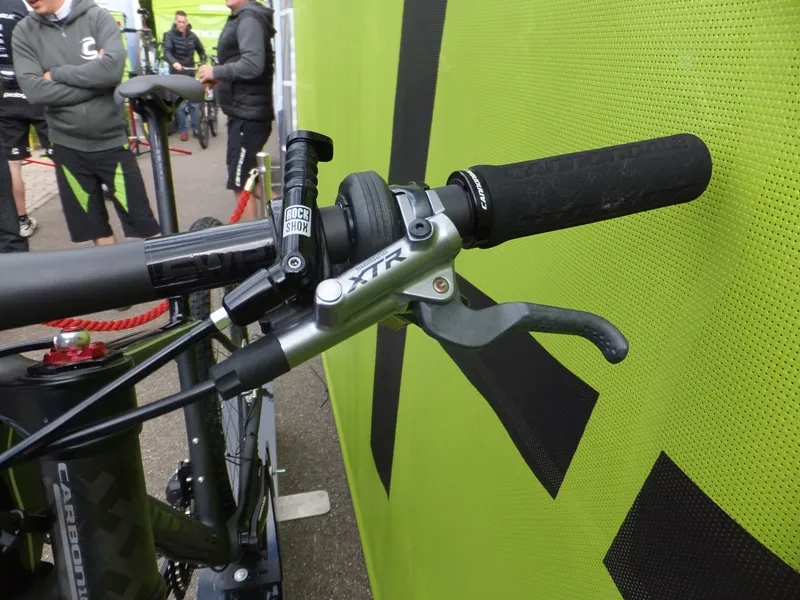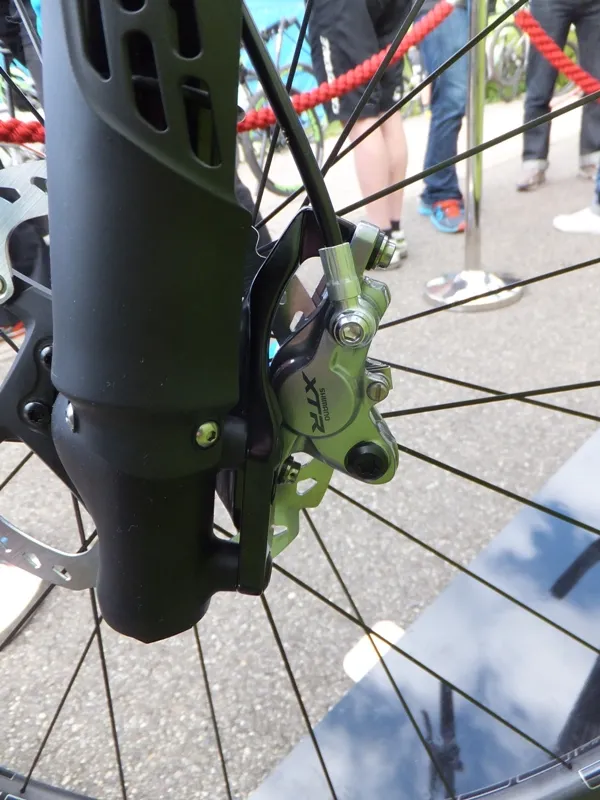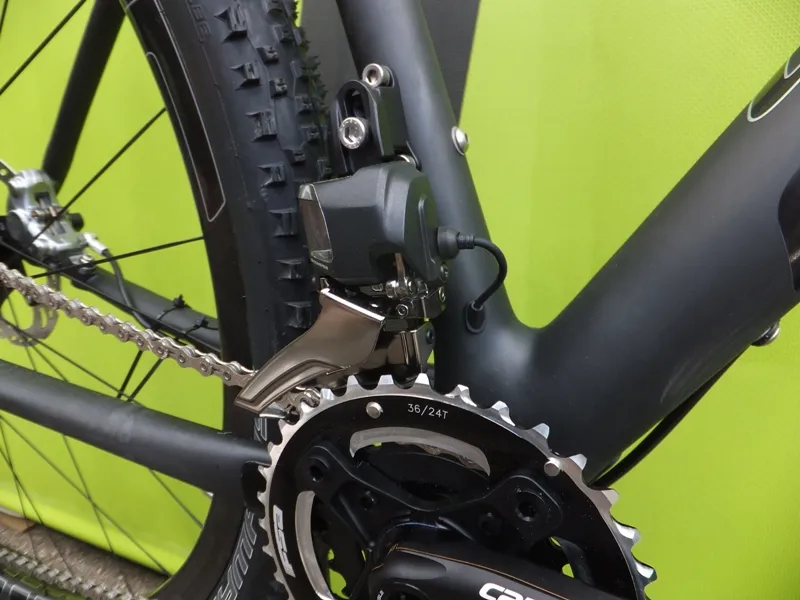Based on a test ride at the Albstadt round of the UCI World Cup, Shimano's XTR Di2 isn't just a mountain version of the company's electronic road group; there is also new sequential 'Synchronized Shift' technology and a more positive feel at the shift levers. Also, the derailleur motors are stronger than their road cousins for precise shifting in nasty conditions.
Shimano is aiming this first generation of 11-speed electronic gadgetry at races — the ‘R’ in XTR denotes Race, after all — and with prices topping £400 for the rear derailleur alone (US, EU and AU pricing is not yet available), only sponsored riders and the keenest of early adopters will be getting it. Still, as with Dura-Ace Di2 trickling down to Ultegra Di2, this new XTR portends what is to come further down the line.
Jon woodhouse and tom marvin from what mountain bike magazine take a look at the brand new shimano xtr di2 groupset
Jon Woodhouse and Tom Marvin from What Mountain Bike magazine discuss the brand new Shimano XTR Di2 groupset
We tested the new group on a BMC Teamelite (not the Cannondale shown) on a portion of the World Cup course. With steep climbs, fire road sections and steep descents, it was a good place to get a feel for the system.
For those who’ve ridden road versions of the Di2 system, its transfer over to the MTB side won’t give many surprises. Shifting across both the cassette and chainrings is as fast and accurate as you would expect. While we’re normally conscientious of our drivechains on steep climbs, backing off a little before chainging gear, we followed Shimano’s opinion that it performs perfectly under pressure, and so made some pretty unforgiving shifts on the ride. While noisy, the derailleurs did their job well, and while it didn’t sound great, it never felt like the drivechain was compromised during shifts. With the XTR derailleurs having a motor around twice as powerful than their road based cousins, there’s plenty of grunt behind them for heavy-handed shifting.
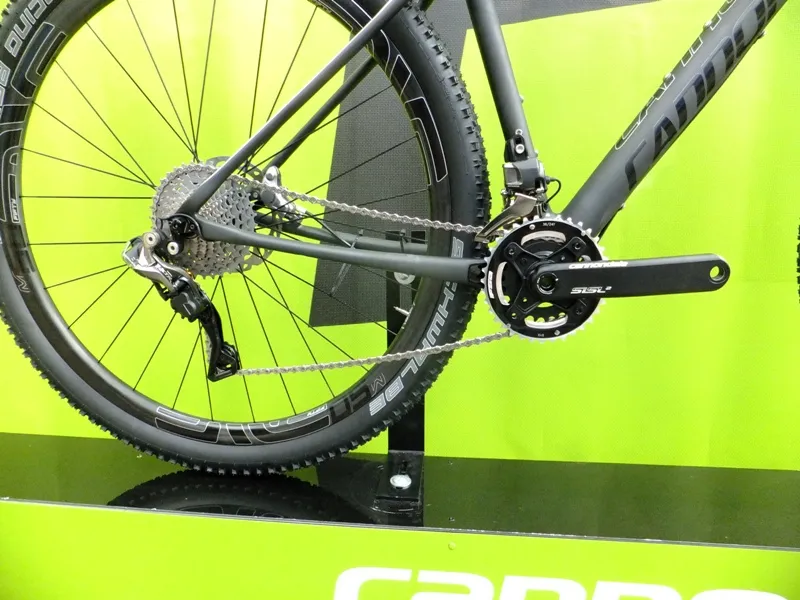
XTR Di2 can be used with one or two derailleurs — and one or two shifters
Programmable Shifter(s)
It is at the shifters — or shifters — where things get interesting. You can use both digital shifters just like mechanical levers, but you can also use just a single lever to control both derailleurs through a programmable sequential system called Synchronized Shift. You can set the Synchronized Shift to change gears with the smallest interval possible — with the electronics sorting out the math along with the front and rear shifting — or you can define up to two Synchronized Shift programs, which can be changed mid ride. For example, you could create one shifting pattern more suited to climbs and one for descents.
You can also turn off Synchronized Shift during your ride, or over-ride the system, assuming you’re running two shifters. Before the system shifts both derailleurs, there’s an audible warning, which can be turned off.
And the function of each of the two levers per shifter can be defined. Theoretically you could have every button shifting the front derailleur down, but you’d not get very far…
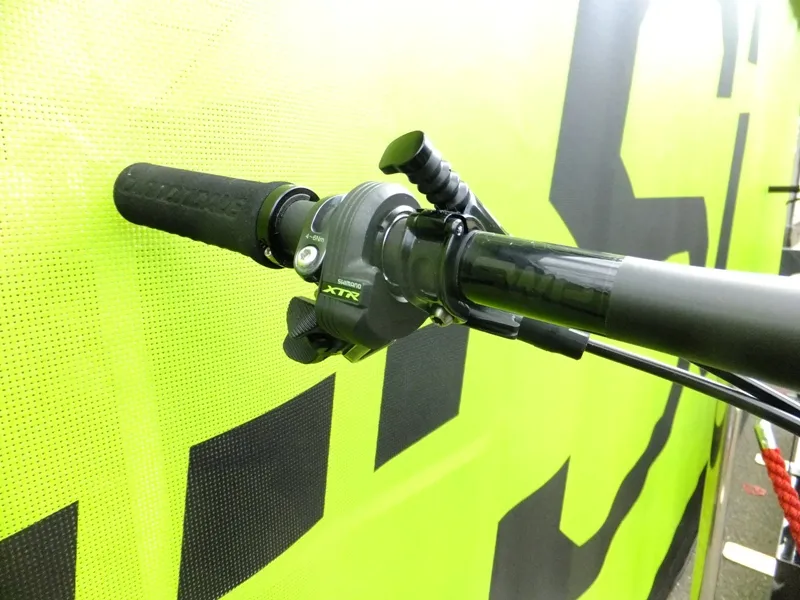
While the road Di2 shifters have a light click, we were surprised at the positivity of the shifters on the XTR group. There’s a definite throw, and defined ‘click’ in the levers, with each lever having two clicks. It’s possible to tune what each click does, whether it’s a single shift, a multi shift or a sequential shift all the way across the cassette. You can even define the speed at which the derailleurs change gear.
A handlebar-mounted control unit shows your gear selection, shift mode and battery life – Absalon say that he’s been using his system for a few weeks on the same battery charge.
Sound complicated? It’ll probably take you a couple of rides to get your head around how you want the set up to operate, but the computer program that Shimano developed looks to be relatively easy to use. Don’t forget that you can also combine your Di2 system with Fox suspension, operating an electronic loc-out.
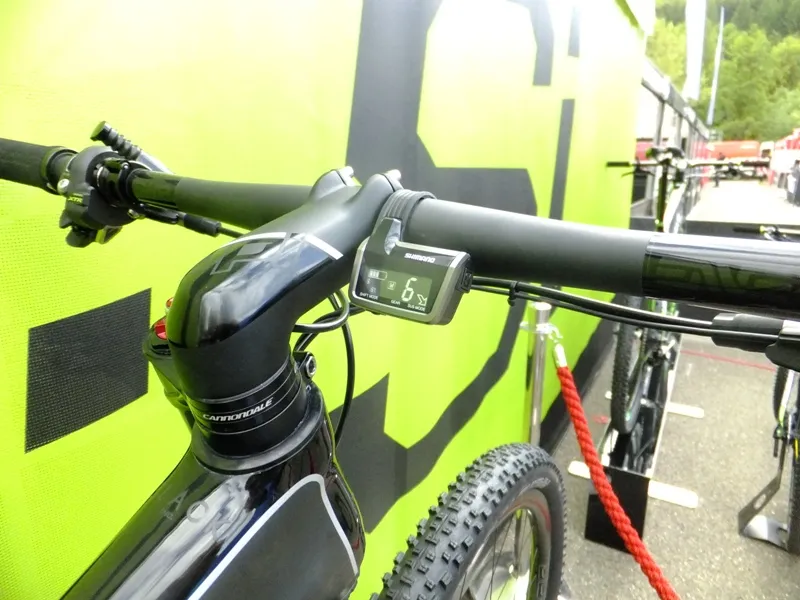
Shimano's Single Ring
With SRAM launching its single-ring XX1, XO1 and X1 groupsets, and with myriad thick/thin, narrow/wide chainrings out there from other manufacturers, Shimano had to release its own chainring to compete. Shimano's version uses taller, squarer teeth to keep the chain from flying off, on their single ring specific option. The chainrings we saw on the pros' bikes were still in prototype form, and it was telling that they’d all decided to run chainguides. Absalon’s only weighed 30g, though, and he said that during their test camp a couple of months ago, nobody dropped a chain. But it’s better to be safe than sorry at cross-country races with prototypes.
In any event, riders can choose between single- and multi-ring set-ups, with a simple spider change on the crank, and removal of a derailleur.
The XTR crank is arguably the market leader in weight and stiffness, and the new one looks to be the same. On a stiff race bike, we felt no obvious flex in the system, as we’d expect. XTR brakes are also another area in which Shimano have a great reputation, and again, power and modulation from the new brakes were up there with the best we’ve ridden.
Before most riders so much as lay eyes on the new XTR Di2 — much less ride it — debates will doubtless be raging about why Shimano have bothered, who will actually buy it, and how it compares to SRAM’s 11-speed offerings.
We told Shimano that for single-ring trail users, XTR seems to lose out to SRAM – the system is more expensive, more complicated and has a narrower range of gears. Shimano responded that the closer ratios of the 11-40 cassette gives less jump between gears, with Shimano aiming for only a 15-percent difference in cadence between gears. For those who want the range of SRAM’s offerings, Shimano believe that they should look to a double ring set-up. Shimano argues that with Synchronized Shift you’ll still only have to think about one shifter, and that many test riders kept forgetting that their bikes had two derailleurs. Of course, your pocket might not forget the extra cost of that shifter.
So, the big question: Is Di2 XTR a game changer? In our opinion, not as much as perhaps SRAM’s XX1, but the digital technology is impressive, especially the extent to which you can program the system. Also, the performance is as good, if not better than we expected; Shimano have executed it almost perfectly.
Please note that the price — only available in GBP at the moment, US/EU/AU pricing still to come — is only for the shifters and the derailleurs.

